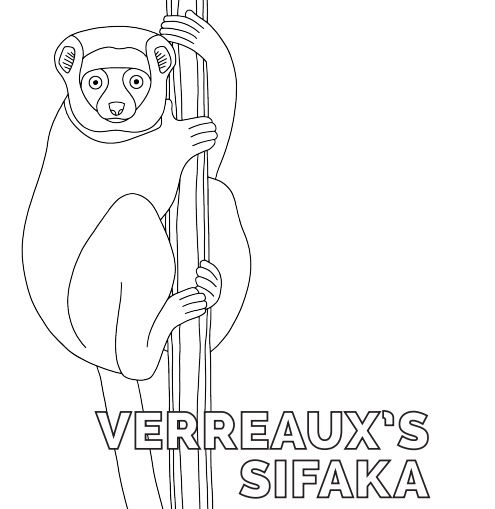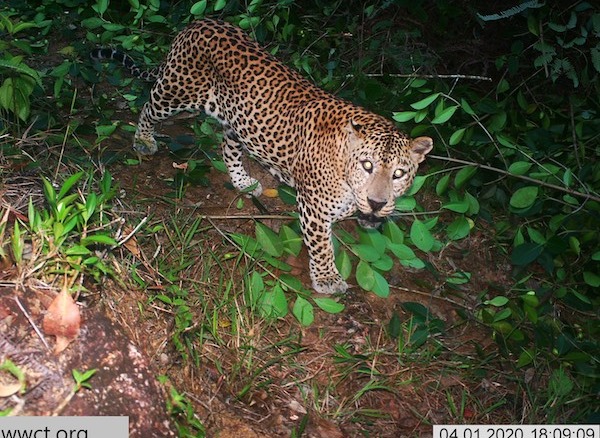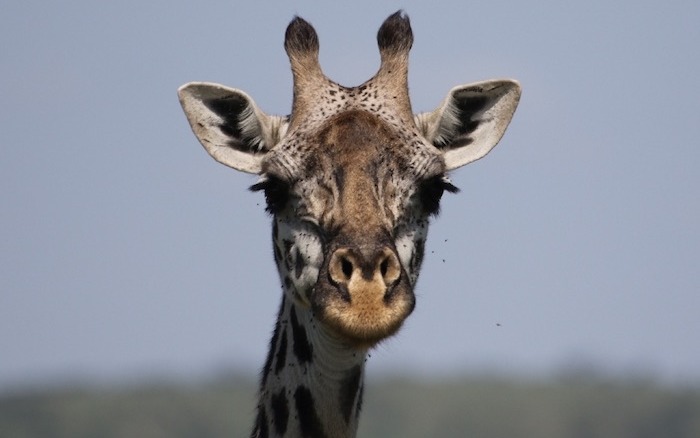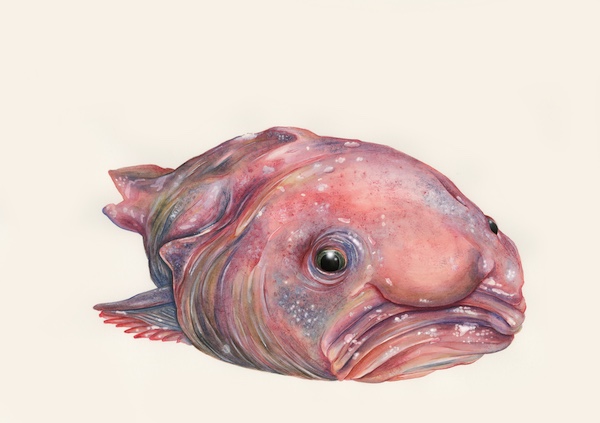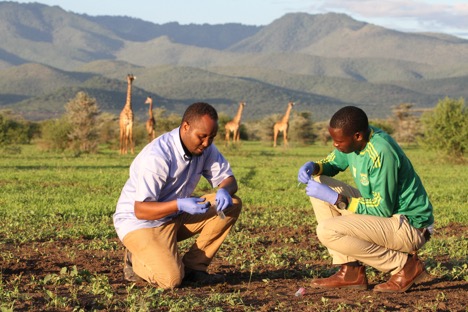Meet Coral Chell:
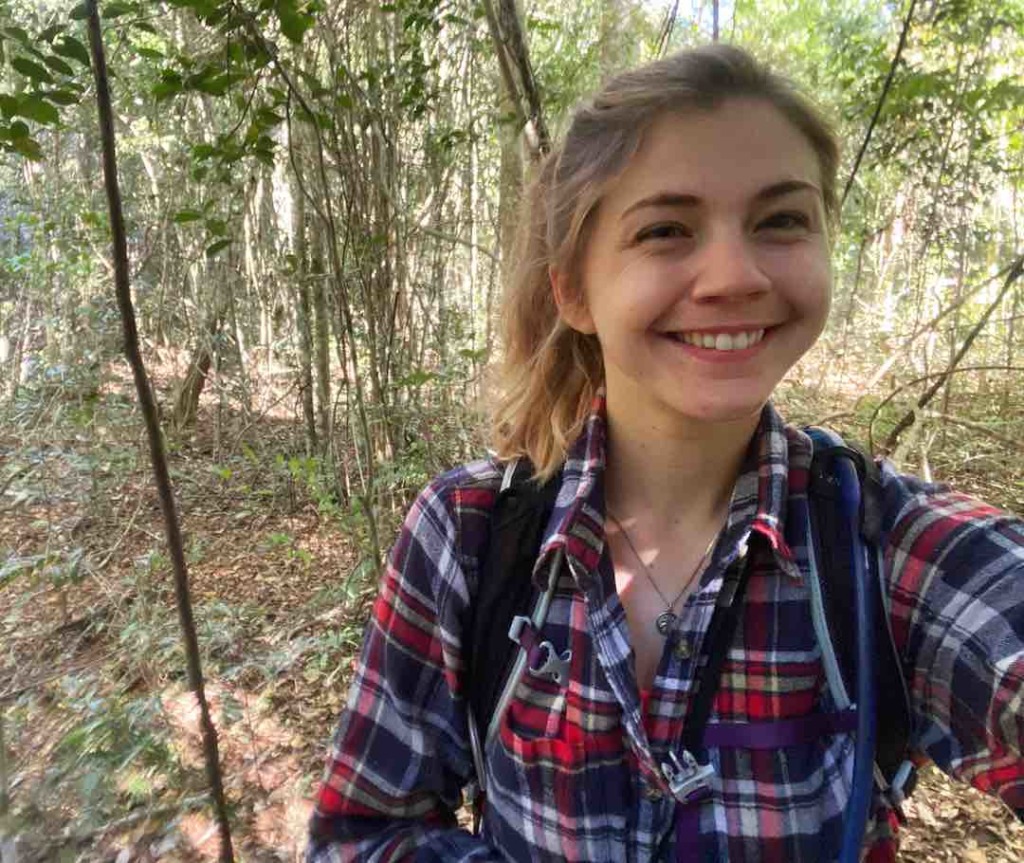
Coral is a PhD student at the University of Toronto who is studying the Coquerel’s sifaka.
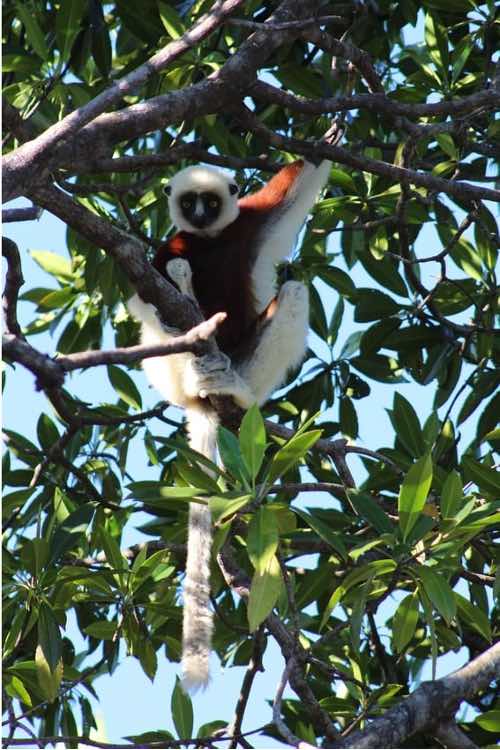
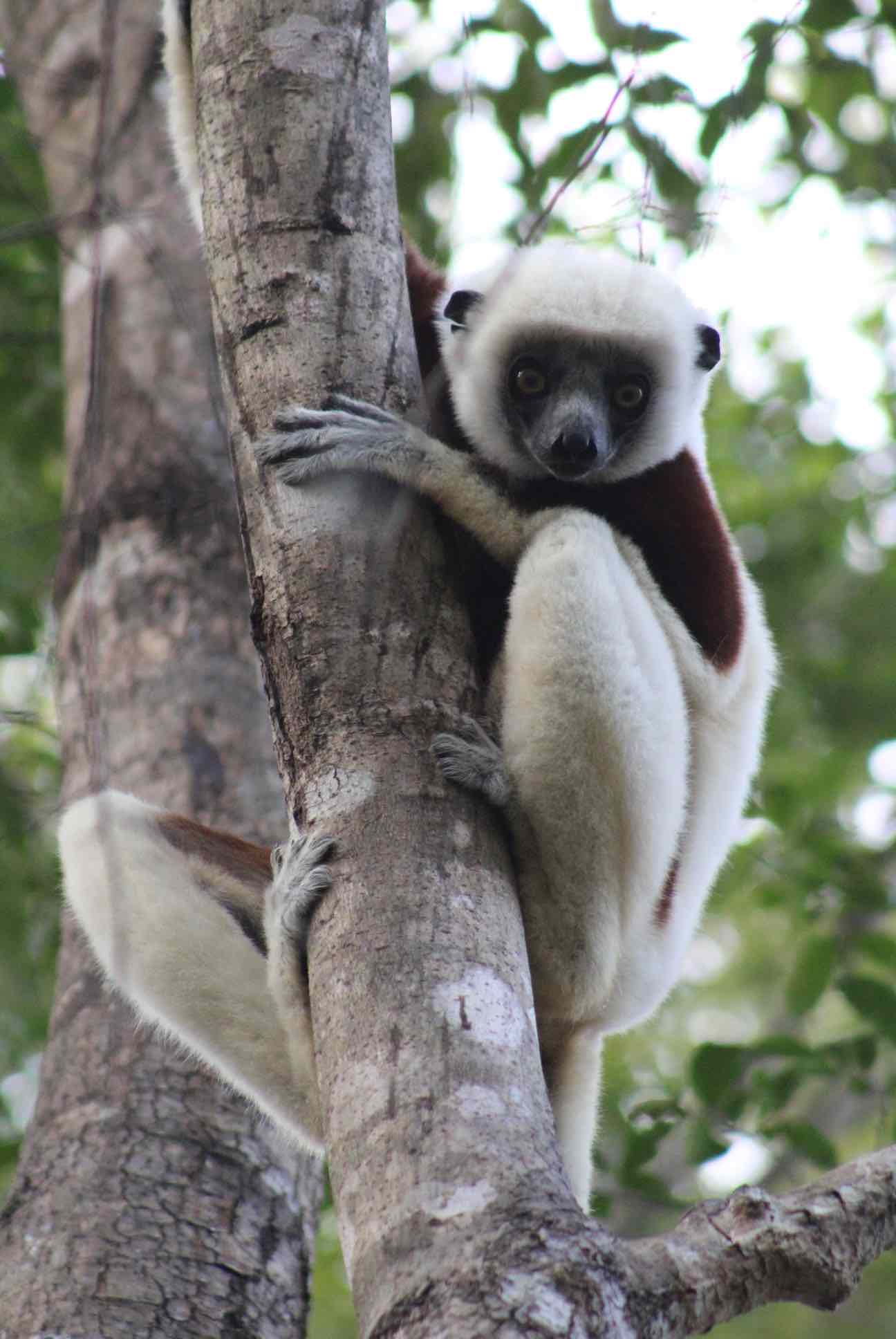
We asked Coral to introduce us to this awesome lemur and to describe what can be done to help conserve it and other lemurs
Mongabay Kids: Could you please introduce us to Coquerel’s sifakas? What are five cool things that you want people to know about sifakas?
Coral: The Coquerel’s sifaka is a type of primate called a lemur. It is a medium-sized lemur, about the size of a domestic cat. Coquerel’s sifakas have a chestnut brown chest and legs, and bright yellow eyes.
There are a lot of things about the Coquerel’s sifakas, and sifakas in general, that make them really cool. (In my opinion, they are the coolest lemur!) If I had to choose, I would say my top 5 interesting facts are:
- The way they move: sifakas are known as clingers and leapers. Their strong legs allow them to leap from tree to tree, and “dance along the floor.”
- Their name matches the noises they make: the name sifaka, a Malagasy word, comes from the distinct call these animals make as they travel though the trees, “Shi-fakh.” Take a listen:
- There are 9 different species of sifakas: They are all different colors and some are slightly bigger than others. The nine species are: Coquerel’s sifaka (Propithecus coquereli), Diademed sifaka (Propithecus diadema), Milne-Edwards’s sifaka (Propithecus edwardsi), Silky sifaka (Propithecus candidus), Perrier’s sifaka (Propithecus perrieri), Verreaux’s sifaka (Propithecus verreauxi), Von der Decken’s sifaka (Propithecus deckenii), Crowned sifaka, (Propithecus coronatus), and the Golden-crowned sifaka (Propithecus tattersalli).
- Some sifakas hug trees when they are hot: Research from Dr. Chen-Kraus found that when it is really hot the Verreaux’s sifaka hug trees to cool down!
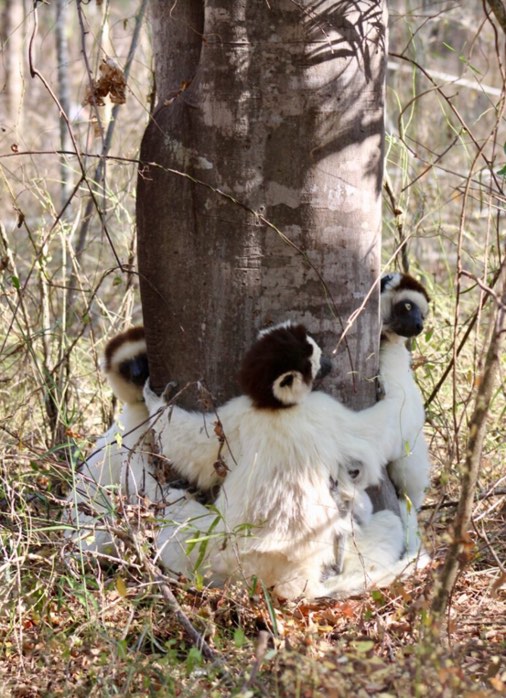
- They love eating leaves: Leaves make up most of the sifakas diet, but when the seasons change they also like to eat fruit, flowers, and tree bark.
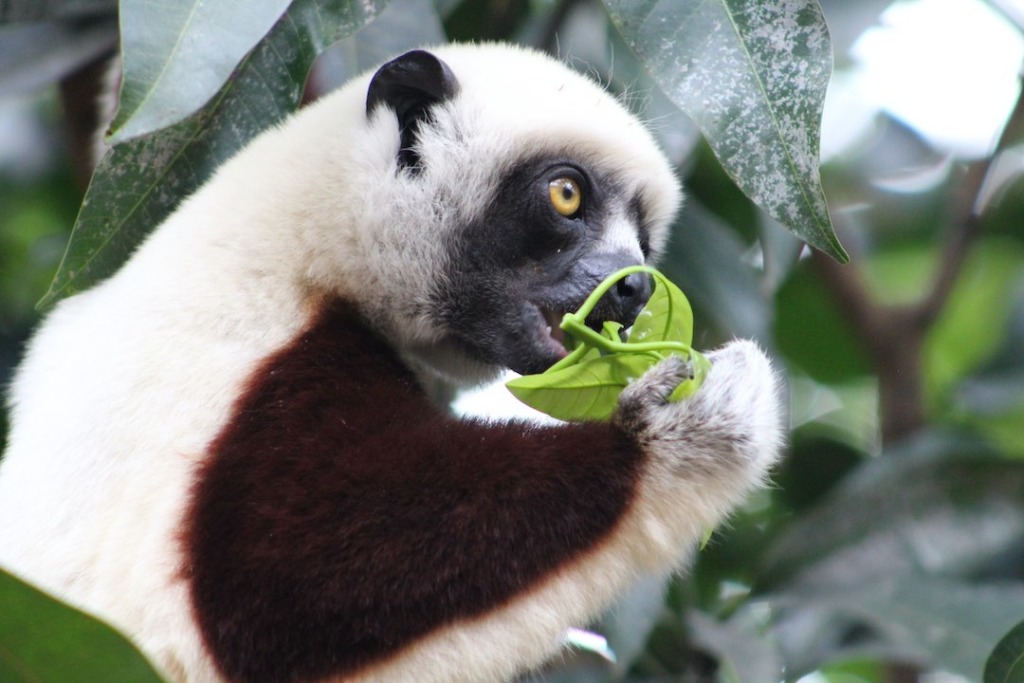
Mongabay Kids: Where do sifakas live?
Coral: In the wild, sifakas can only be found on the island of Madagascar. Madagascar is the fourth largest island in the world, located in the Indian ocean off the east coast of mainland Africa.
Some individuals can also be found in zoo’s and wildlife parks such as the Duke Lemur Center in the US and Chester Zoo in the UK, but only a few as they are so hard to look after in captivity.
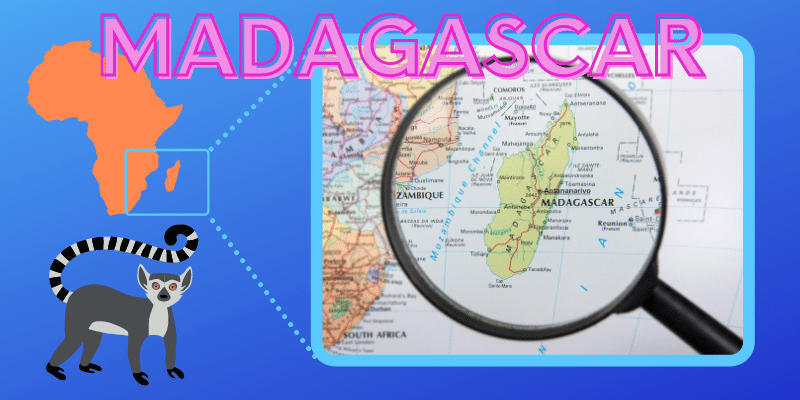
Mongabay Kids: What kind of habitats do they live in?
Coral: Sifakas are awesome as they can be found in pretty much all habitats across Madagascar. Each of the 9 species of sifaka is found in a different habitat on the island. For example, the Diademed sifaka lives in the rainforest in the east of the island. Whereas the Coquerel’s sifaka lives in the dry forests of the west. Sifaka’s can also be found in other non-forest habitats including grasslands, mangroves, and human-modified habitats, such as farmland and villages.
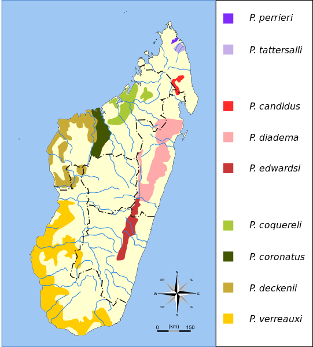
Sifaka distribution in Madagascar. Image: IUCN Red List
Mongabay Kids: You helped discover that Coquerel’s sifakas live in mangroves. What are mangroves and why are they important for sifakas and other animals?
Coral: Mangroves are coastal habitats (meaning they are found by water) that are made up of trees and shrubs. But these trees and shrubs are special as they are specially adapted to living in saltwater environments in low oxygen soil.
Another interesting thing about mangrove forests is that they grow mostly in tropical and subtropical hot areas of the world. This is because the trees can’t handle freezing temperatures.
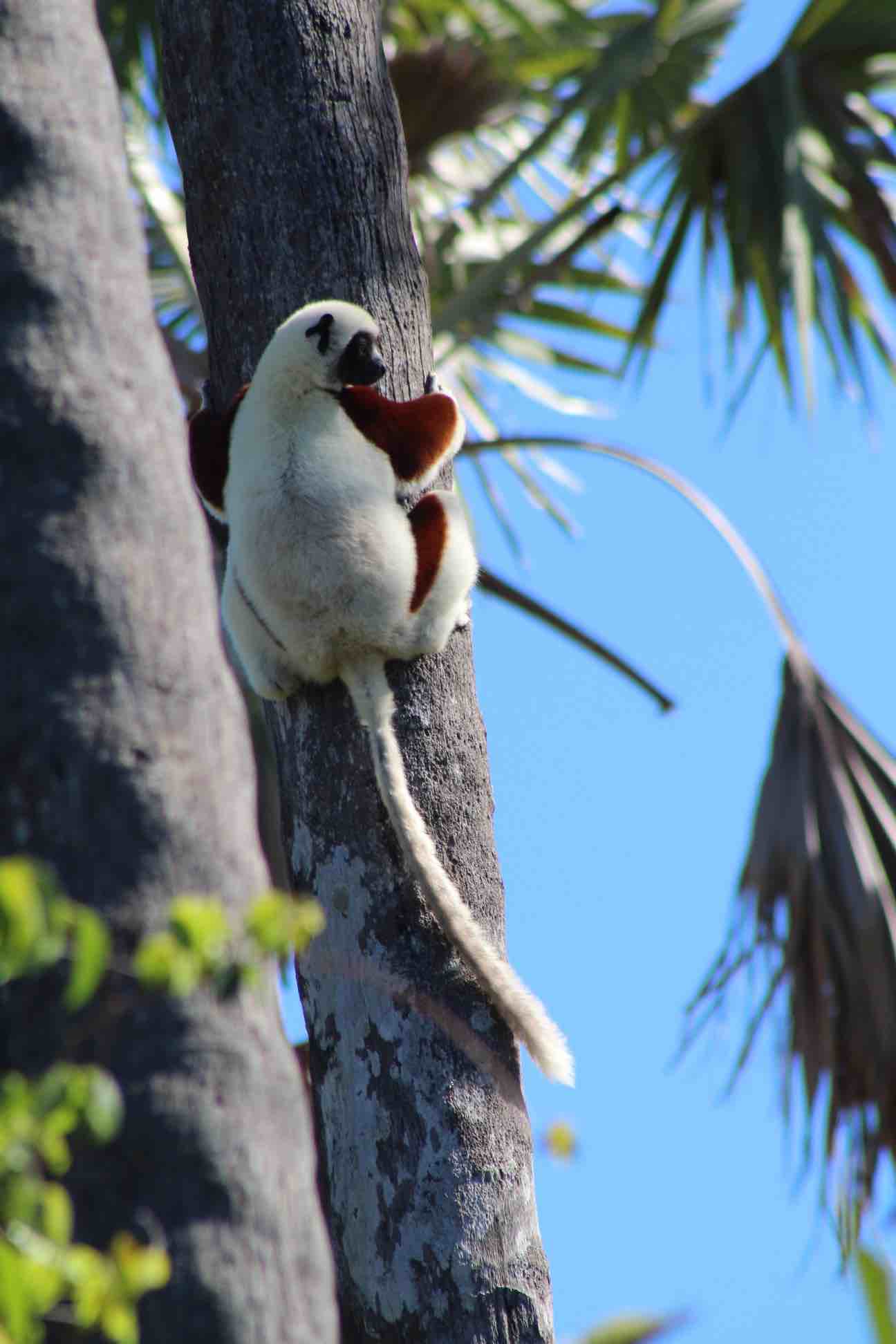
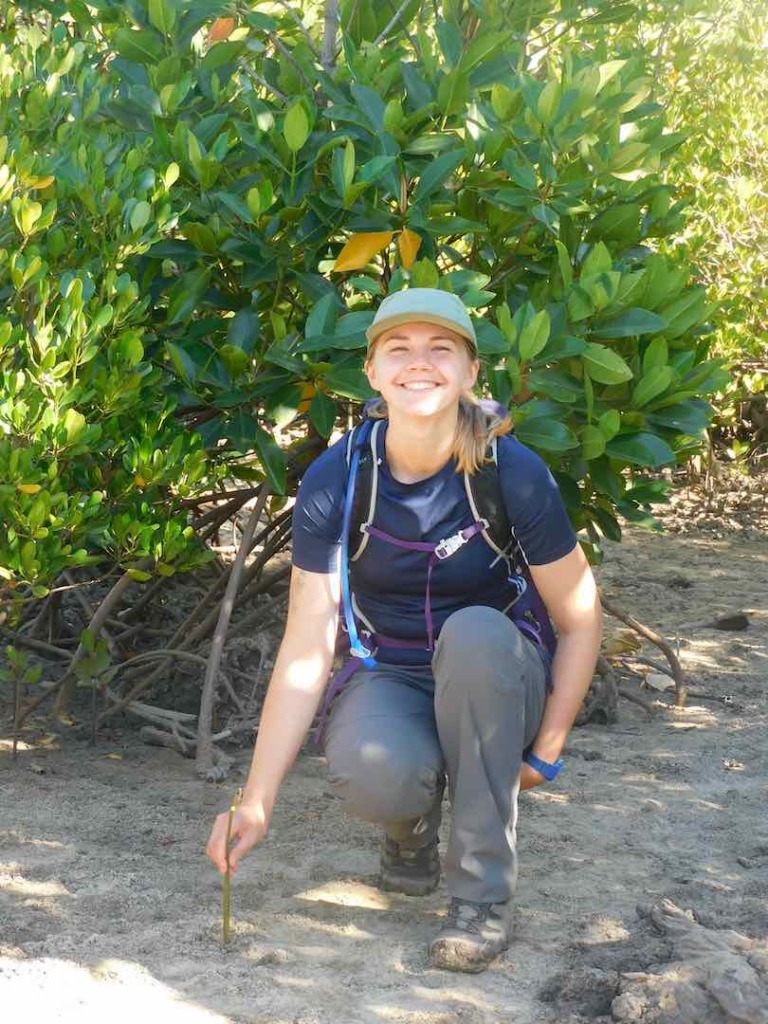
Mangroves are amazing habitats and are incredibly important to animals and people for a lot of reasons! For animals, including the sifakas, the roots of the trees and the trees themselves provide a lot of food and shelter. This is particularly good for animals like fish and birds who are looking to hide from predators.
Mangroves are actually the most important for humans, particularly those that live in the coastal communities where mangroves are found. Mangrove habitats provide ecosystem services, which are any positive benefit that wildlife or the ecosystem provides to people.

Mangroves act as a carbon store, helping us in our fight against climate change. Mangroves act as storm barriers, protecting inland areas from flooding and erosion. And finally, mangroves are fish nurseries, which provide money and food for the local communities.
Despite all these things making mangroves a key habitat with high importance they are thought to be one of the most threatened ecosystems across everywhere they exist. For example, in Madagascar mangrove populations have declined by around 21% in the past 30 years. However, conservationists are working to help save mangroves and we even have a world mangrove day on the 26th of July every year where we can celebrate all things mangroves.

Mongabay Kids: What conservation challenges do Coquerel’s sifakas face? How can young people help conserve lemurs?
Coral: Unfortunately, all sifaka species, including the Coquerel’s sifaka, are classed as Critically Endangered on the IUCN red list since 2020. This means they are at the highest risk of extinction and having declining population numbers.
The main threat and challenge that the Coquerel’s sifaka faces is loss and fragmentation of its forest habitat, through fires and charcoal production. However, it isn’t just sifakas that face this issue – all lemurs across Madagascar are affected by habitat loss and fragmentation.
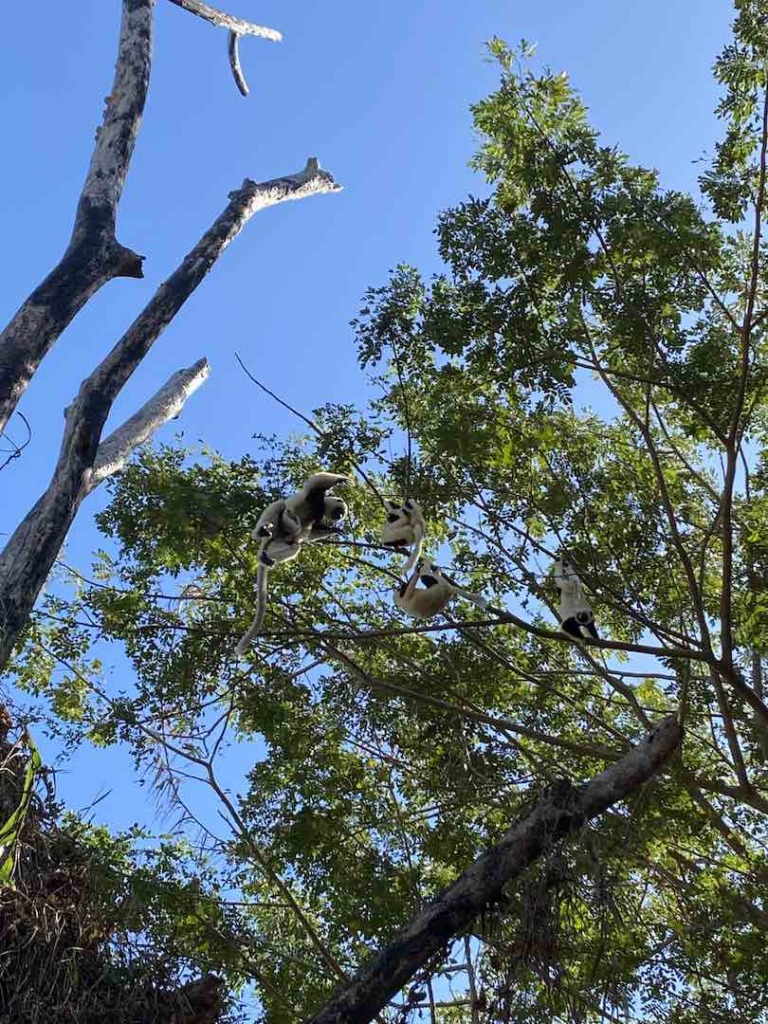
Another major threat to the Coquerel’s sifaka is hunting. In some of the areas where sifakas are found people don’t hunt and eat sifakas because it is a cultural taboo. However, as people who don’t share this belief move to where sifakas live we see hunting occur, which is putting the sifakas at risk.
However, it’s not all sad news and a lot of conservation organizations in Madagascar and around the world are working to solve some of these issues, particularly habitat loss which affects all species on Madagascar.
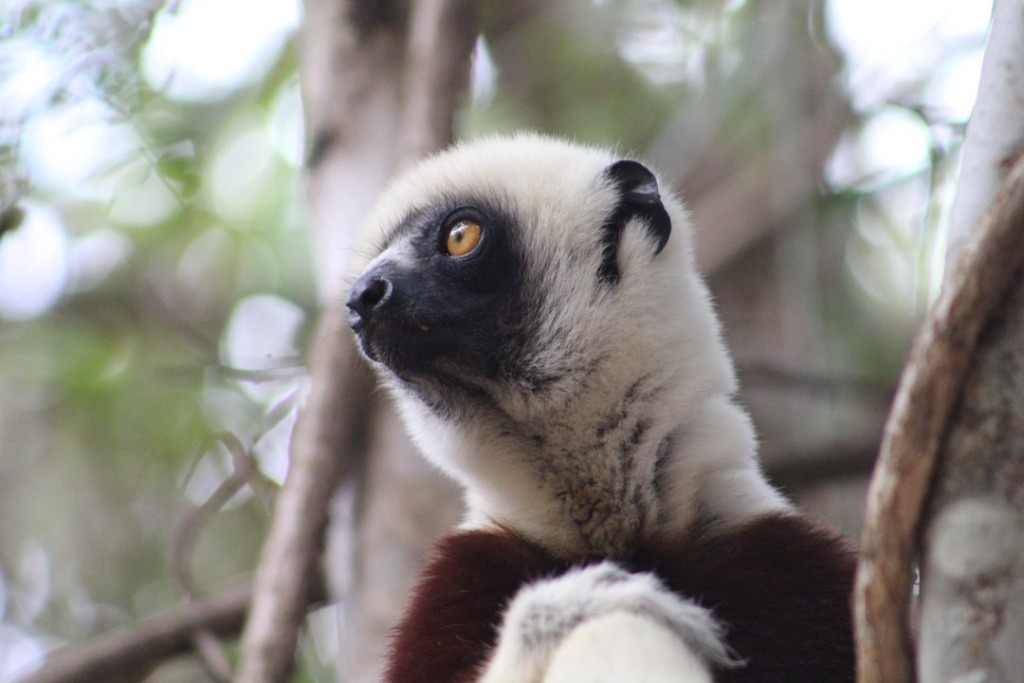
Luckily there are a lot of things young people can do to help sifaka’s and support lemur conservation in Madagascar.
- Learn about lemurs: One of the best things you can do is learn as much as you can about lemurs and the island of Madagascar. There are loads of online educational resources you can use, including the Duke Lemur Center, the Lemur Conservation Network. Also, reach out to lemur scientists and conservationists if you have any questions. We love talking about lemurs!
- Spread the lemur love: Once you have all this new knowledge on lemurs pass it on to your friends and family to spread the lemur love!
- Visit zoos: There are lots of zoos and wildlife parks across the US and Europe that house lemurs that are a part of captive breeding programs and support lemur conservation efforts on the ground in Madagascar. Visit this list on the Lemur Conservation Network website to see all the accredited zoos and organizations. The Lemur Conservation Network also provides information on how you can support lemur conservation efforts.
Activity: color in sifakas and other lemurs!
More lemur facts & fun!


